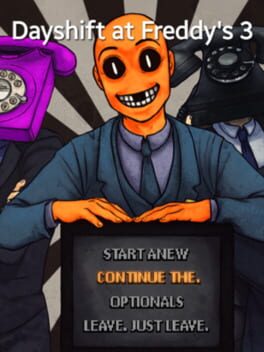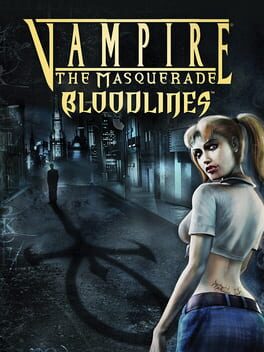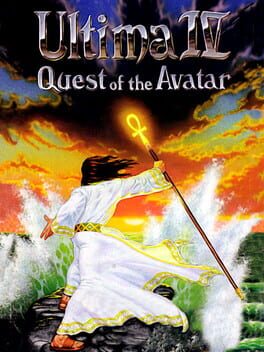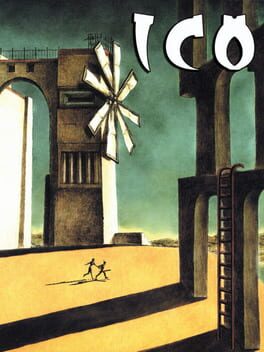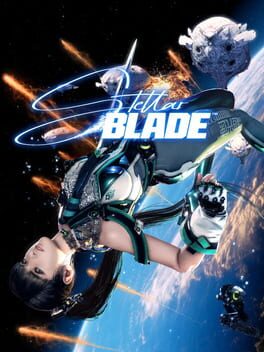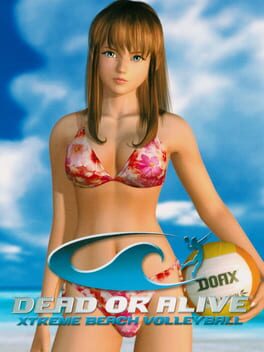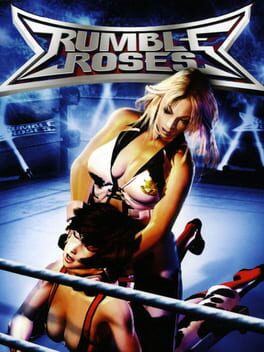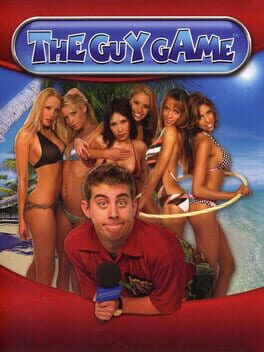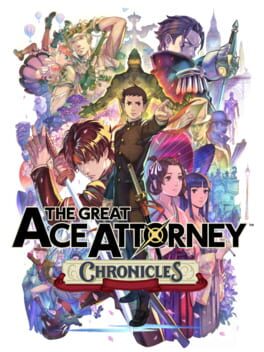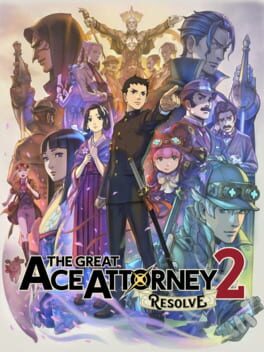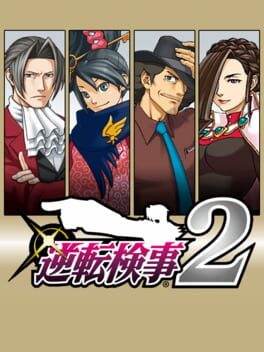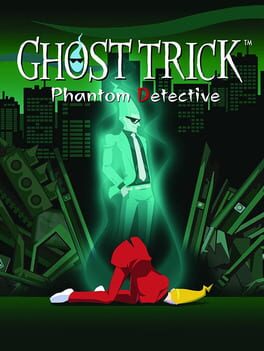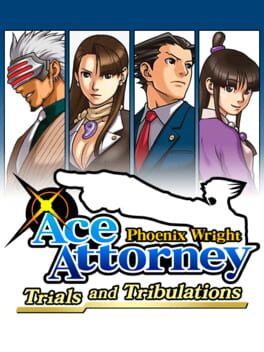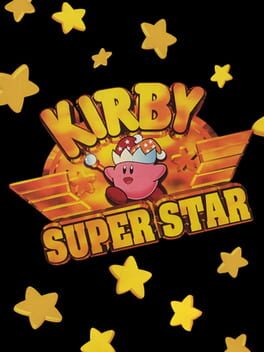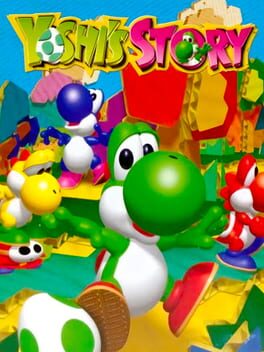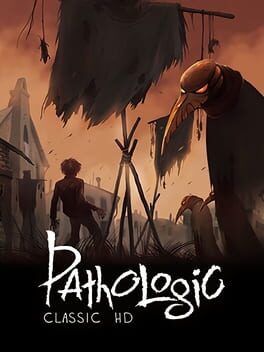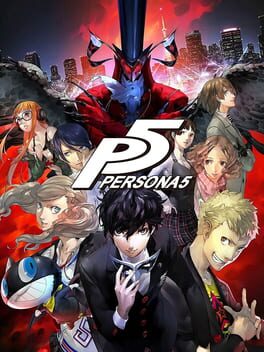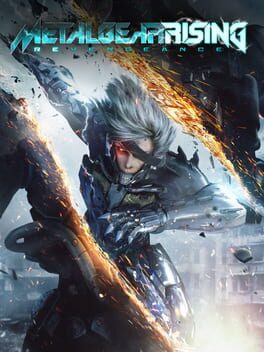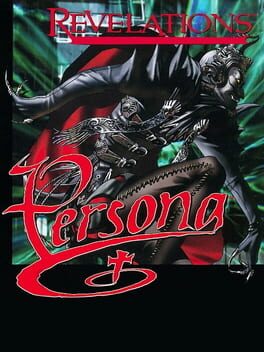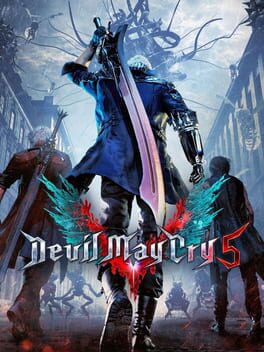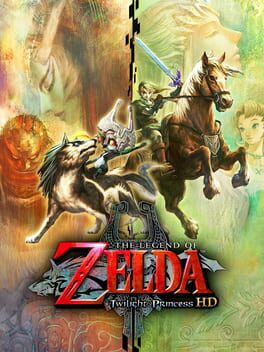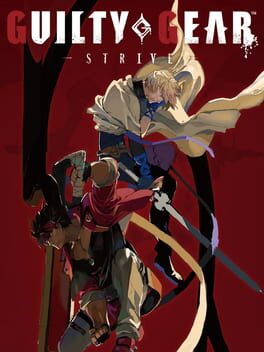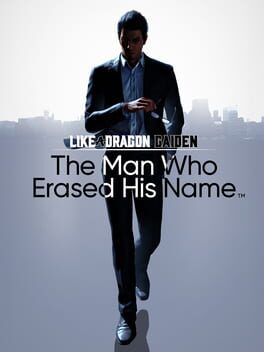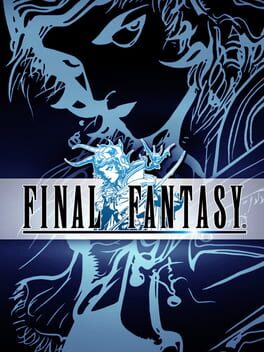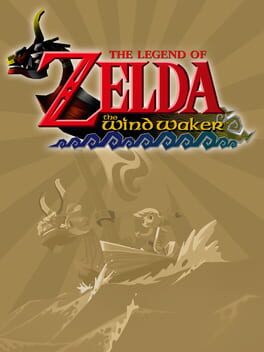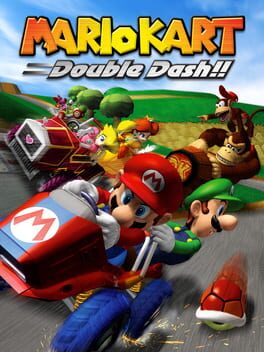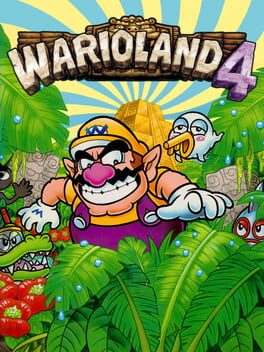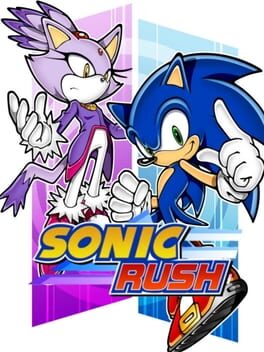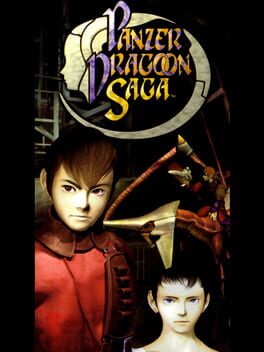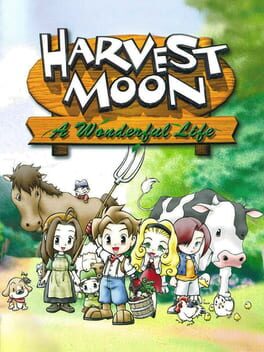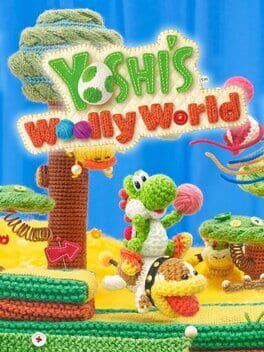G0dot
295 reviews liked by G0dot
The Last Guardian
2016
Can’t believe Dunkey really tricked nine million gamers into thinking The Last Guardian was this broken dumpster fire devoid of any fun or joy. Shaking my head. The gaming community really let me down with this one, maybe some other content creator a decade later will realize it was actually good when it’ll be +120$ on retro game store shelves.
Okay, being more rational here, I’ve always found the mixed reception of The Last Guardian to be rather puzzling. You’d think the third game from industry legend Fumito Ueda, the man behind ICO and Shadow of the Colossus, arguably two of the most influential PS2 games ever, would come out with more enthusiasm behind it after its infamously long nine-year development time, spanning a whole console generation. But quite literally the opposite happened. The game was so divisive on its release by critics and audiences it’s no surprise nobody wanted to be the guinea pig that invested their time and money into it. Many of its detractors claimed this was because Trico, the big animal companion and the main mechanic of the game, was unresponsive and unreliable too frequently, giving the player more lack of control than necessary and making playing the game more frustrating than it needed to be. Which I’ve always found that odd because I feel lack of control has always been a major theme in Ueda’s games?
In ICO, you play as a little boy trying to escape a big castle with a girl named Yorda who doesn’t speak the same language and can’t make the same jumps or climbs as you, yet is relied upon to open certain doors to progress your escape. You cannot progress without Yorda, you have to work around her limitations to solve puzzles and protect her from the occasional fight with these shadowy figures. If you go too many rooms too far away from her, you risk her getting captured which kills you. So you have to escort her a lot of the time by hand or yell for her to get her to come to you, which her AI has never really been the best to be honest? It was to the point where Team Ico moved development of the game from the PS1 to the PS2 so they can have more processing power to get her to work and it can still be a bit bumbly and finicky at times. In Shadow of the Colossus, you were this warrior who wandered into a forbidden land to make a deal with a deity to resurrect a girl named Mono from the dead by riding to and killing 16 Colossi, these impossibly towering creatures made of stone and fur. You had to climb on these things and find their weak spots to stab as you wrestle with the overwhelming forces of gravity of these massive creatures trying to shake you off, which oftentimes means you have to hang on for dear life for what seems minutes on end before you can keep climbing as you watch your stamina bar get lower and lower, creating more dread of falling off and having to get back on again. It’s not as if oppression by removing control from the player has never been in Ueda’s previous work before, and these are often aspects I’ve seen praised in these two games, myself included. However, I think these are often overlooked when talking about The Last Guardian because there’s always a sense that you have more kinds of control over your own actions in those games at the end of the day. That you are the one who can hold Yorda’s hand and take her where she needs to be most of the time, that you are the one who made the decision to climb upwards on the Colossi at the most inopportune time. Ueda’s games have always had this near-perfect balance of making the grand scenario more and more learnable while still grounding the player in the reality they’re really in.
This is why I feel The Last Guardian was a harder sell for many people. While I argue the journey itself is more tonally lighthearted than his previous work, The Last Guardian is by far Ueda’s most oppressive feeling game. The boy is not The Wanderer, he’s not even Ico, he’s just about as small and frail as Yorda and can only make the smallest of jumps, hang on the tiniest of ledges, and can push only certain objects around in terrain that scales from tower to tower in a journey that asks you to go higher and higher up the clouds. You more than ever have to rely on your partner Trico, this massive impossible mix of a cat and a bird probably the size of a small house. Only she can make you reach heights you otherwise can’t and make those impossible jumps from tower to tower. Trico is probably the most convincing animal in a video game I’ve ever played, but to some, that’s a burden they can’t deal with. Trico will get hungry so you have to look for barrels sometimes to feed her, Trico will get flustered when she attacks these strange inanimate stone guards so you have to pet her to calm her down, Trico gets scared of these glass windows with eye-shaped designs on them so you have to find a way to destroy them even if you have to do some insane parkour to get to them, Trico will sometimes just flat out ignore your yelling commands by design taking longer to do what the player may see as the simplest of jumps. While Trico is the most relied-on partner character ever in an Ueda game, the boy still has to escort and command this man-eating beast from place to place to solve puzzles or to platform around large jumps. In other words, it’s ICO again, but this time the roles are reversed.
Of course the pitch of “you move an animal around that will act like an animal” was only going to appeal to the most committed to its premise, and it being Ueda’s longest game meant more people were going to fall off of it before they got a chance to see its conclusion. But I feel that aspect also overshadowed discussion of other issues the game has to be honest. You can practically feel its nine years of ambitious development time when the game starts to barely contain its targeted 30fps threshold. The environmental flourishes and details around Ueda’s legendarily creative architecture are jaw-droppingly gorgeous, and as you get higher and higher up the clouds you see more and more of what you maneuvered around down below, but sometimes I feel this hyper fixation on its details mixed with its advanced lighting system can obfuscate puzzle information more often than it needed to, and I feel Team Ico knew this, which is why the game relies on its tip systems too much. There are not only button prompts that appear frequently on the top right of the screen to give clues on what you can interact with, but narration from the boy's perspective will appear similar to Shadow of the Colossus if the game detects the player being on a puzzle for too long. It’s kind of a shame that Ueda’s games still feature these immersion-breaking UI elements present and criticized in Shadow of the Colossus for years with no real way of turning them off, but I feel the game would’ve only been more frustrating on a first time playthrough if they weren’t there. Then there are the occasional physics engine issues that the game will stumble upon, while I found the physics complied with me more than most Havok engine games do to be honest, I did have a moment in my playthrough where when Trico jumped the boy was suddenly teleported upwards which made me fall towards my impending doom, so it’s by no means perfect even if I had a better time with it. The camera is by far my biggest issue with the game. It’s this fickle mistress that only focuses on what it wants to. Sometimes it’ll autofocus on Trico, or the ledge you need to jump on, and sometimes you have to adjust it yourself. Sometimes the camera will get stuck in tight environments with you and Trico which will reset itself with this awkward cut to black which can repeat over and over again rather than just clipping out of bounds to give the player a better view from behind similar to God Hand. The Last Guardian's technical ambitions from its AI to its environments can be seen from a distance as impressive, but its lack of gracefullness at times can also be seen as its downfall, and it’s no wonder why the game had the hardest time sticking with players the most.
It… might be my favorite Ueda game?
It might be too early to tell as I’m writing this, but it just feels right to say. This game just did it all for me. While ICO and Shadow of the Colossus are up there as some of my personal favorite games, I feel The Last Guardian is the most successful in what it sets out to do: to bond the player with its partner character. I never really particularly cared for Yorda or Mono or even Agro as much as I wish I could despite those characters being the central emotional core of the story. While I appreciate the former for its wordless communication between Yorda and Ico along their journey, I can understand the criticisms against the latter. It’s hard to place the corpse of a woman you’ve never interacted with in front of the player and expect them to care, which is why I feel players connected with Agro the horse a lot more since it’s someone you used to venture around the place even if all you did was ride on it and commanded where to go. Trico is that but taken a step further. Yes, Trico acts like a big dumb animal, but somehow managing to get her around these dark tight corridors with traps or these sky-bound vistas feels like accomplishing little miracles one at a time. The game features Ueda’s most creative puzzle design yet, asking the player to constantly think with Trico in mind, and it’s where the rooms where you are alone without Trico are the most pulse-pounding anxiety-inducing. Without that protection from Trico, you are more in danger from other threats like the stone guards or extreme heights you can’t fall on Trico as a failsafe. About halfway through I looked at Trico less like an obstacle and started to look at Trico as the guardian she really is. And you know what I think?
It’s rad as hell! And it’s fun! Seriously! Every time you get Trico to do her earth-shattering cat pounce from one stone pillar to the next it feels like this major accomplishment that the two of you managed to pull off. Every moment you have to climb around Trico when she sees an eye-shaped glass window hung by a stone tower and then get there by doing some mind-bending platforming as you look down at the stomach-churning distance between you and the ground (no seriously, jesus christ lol) and having to jump all the way down on her back is so immensely intense but pulling it off to progress just works. Every time Trico saves you from an army of mysterious stone guards is the ultimate “sick ‘em fido” of video games, yet the game always reminds you to comfort Trico after with a few pets, and maybe pull out a few spears thrown at her body. It’s this dedication the game has with these moment-to-moment connections between you and Trico as you two help each other out closer and closer to the end that makes the later moments where she starts to break design conventions all the more convincing and powerful. The Last Guardian to me is a game of little accomplishments up to the grand finale.
The Last Guardian is not a perfect game, and it’s hardly one I can see the casual player really sticking with very long. Even I had moments where I wished Trico would comply with me more and wished the game’s framerate didn’t give me a headache, but the last three hours of this game to me are borderline perfect, climaxing to Ueda’s strongest story beats yet, somehow managing to top himself with his best ending yet (a man already known for crafting the best endings ever). All the coincidental frustration I had with The Last Guardian seemed fleeting and diminutive. By the end of it, I was more frustrated at being reminded of its dismissive reputation that caused me to hold it off this long. The Last Guardian should be a testament to Team Ico’s mastery of storytelling through game design, rather than be left in the shadows of its predecessor's legacies, but even if it stays within those shadows of obscurity forever, I’m happy to have stuck with the journey through The Nest, atop Trico’s feathery back.
The Last Guardian is a game of accomplishments, and much like ICO and Shadow of the Colossus, stands just as tall as those games do, as the achievement it undoubtedly is.
Okay, being more rational here, I’ve always found the mixed reception of The Last Guardian to be rather puzzling. You’d think the third game from industry legend Fumito Ueda, the man behind ICO and Shadow of the Colossus, arguably two of the most influential PS2 games ever, would come out with more enthusiasm behind it after its infamously long nine-year development time, spanning a whole console generation. But quite literally the opposite happened. The game was so divisive on its release by critics and audiences it’s no surprise nobody wanted to be the guinea pig that invested their time and money into it. Many of its detractors claimed this was because Trico, the big animal companion and the main mechanic of the game, was unresponsive and unreliable too frequently, giving the player more lack of control than necessary and making playing the game more frustrating than it needed to be. Which I’ve always found that odd because I feel lack of control has always been a major theme in Ueda’s games?
In ICO, you play as a little boy trying to escape a big castle with a girl named Yorda who doesn’t speak the same language and can’t make the same jumps or climbs as you, yet is relied upon to open certain doors to progress your escape. You cannot progress without Yorda, you have to work around her limitations to solve puzzles and protect her from the occasional fight with these shadowy figures. If you go too many rooms too far away from her, you risk her getting captured which kills you. So you have to escort her a lot of the time by hand or yell for her to get her to come to you, which her AI has never really been the best to be honest? It was to the point where Team Ico moved development of the game from the PS1 to the PS2 so they can have more processing power to get her to work and it can still be a bit bumbly and finicky at times. In Shadow of the Colossus, you were this warrior who wandered into a forbidden land to make a deal with a deity to resurrect a girl named Mono from the dead by riding to and killing 16 Colossi, these impossibly towering creatures made of stone and fur. You had to climb on these things and find their weak spots to stab as you wrestle with the overwhelming forces of gravity of these massive creatures trying to shake you off, which oftentimes means you have to hang on for dear life for what seems minutes on end before you can keep climbing as you watch your stamina bar get lower and lower, creating more dread of falling off and having to get back on again. It’s not as if oppression by removing control from the player has never been in Ueda’s previous work before, and these are often aspects I’ve seen praised in these two games, myself included. However, I think these are often overlooked when talking about The Last Guardian because there’s always a sense that you have more kinds of control over your own actions in those games at the end of the day. That you are the one who can hold Yorda’s hand and take her where she needs to be most of the time, that you are the one who made the decision to climb upwards on the Colossi at the most inopportune time. Ueda’s games have always had this near-perfect balance of making the grand scenario more and more learnable while still grounding the player in the reality they’re really in.
This is why I feel The Last Guardian was a harder sell for many people. While I argue the journey itself is more tonally lighthearted than his previous work, The Last Guardian is by far Ueda’s most oppressive feeling game. The boy is not The Wanderer, he’s not even Ico, he’s just about as small and frail as Yorda and can only make the smallest of jumps, hang on the tiniest of ledges, and can push only certain objects around in terrain that scales from tower to tower in a journey that asks you to go higher and higher up the clouds. You more than ever have to rely on your partner Trico, this massive impossible mix of a cat and a bird probably the size of a small house. Only she can make you reach heights you otherwise can’t and make those impossible jumps from tower to tower. Trico is probably the most convincing animal in a video game I’ve ever played, but to some, that’s a burden they can’t deal with. Trico will get hungry so you have to look for barrels sometimes to feed her, Trico will get flustered when she attacks these strange inanimate stone guards so you have to pet her to calm her down, Trico gets scared of these glass windows with eye-shaped designs on them so you have to find a way to destroy them even if you have to do some insane parkour to get to them, Trico will sometimes just flat out ignore your yelling commands by design taking longer to do what the player may see as the simplest of jumps. While Trico is the most relied-on partner character ever in an Ueda game, the boy still has to escort and command this man-eating beast from place to place to solve puzzles or to platform around large jumps. In other words, it’s ICO again, but this time the roles are reversed.
Of course the pitch of “you move an animal around that will act like an animal” was only going to appeal to the most committed to its premise, and it being Ueda’s longest game meant more people were going to fall off of it before they got a chance to see its conclusion. But I feel that aspect also overshadowed discussion of other issues the game has to be honest. You can practically feel its nine years of ambitious development time when the game starts to barely contain its targeted 30fps threshold. The environmental flourishes and details around Ueda’s legendarily creative architecture are jaw-droppingly gorgeous, and as you get higher and higher up the clouds you see more and more of what you maneuvered around down below, but sometimes I feel this hyper fixation on its details mixed with its advanced lighting system can obfuscate puzzle information more often than it needed to, and I feel Team Ico knew this, which is why the game relies on its tip systems too much. There are not only button prompts that appear frequently on the top right of the screen to give clues on what you can interact with, but narration from the boy's perspective will appear similar to Shadow of the Colossus if the game detects the player being on a puzzle for too long. It’s kind of a shame that Ueda’s games still feature these immersion-breaking UI elements present and criticized in Shadow of the Colossus for years with no real way of turning them off, but I feel the game would’ve only been more frustrating on a first time playthrough if they weren’t there. Then there are the occasional physics engine issues that the game will stumble upon, while I found the physics complied with me more than most Havok engine games do to be honest, I did have a moment in my playthrough where when Trico jumped the boy was suddenly teleported upwards which made me fall towards my impending doom, so it’s by no means perfect even if I had a better time with it. The camera is by far my biggest issue with the game. It’s this fickle mistress that only focuses on what it wants to. Sometimes it’ll autofocus on Trico, or the ledge you need to jump on, and sometimes you have to adjust it yourself. Sometimes the camera will get stuck in tight environments with you and Trico which will reset itself with this awkward cut to black which can repeat over and over again rather than just clipping out of bounds to give the player a better view from behind similar to God Hand. The Last Guardian's technical ambitions from its AI to its environments can be seen from a distance as impressive, but its lack of gracefullness at times can also be seen as its downfall, and it’s no wonder why the game had the hardest time sticking with players the most.
It… might be my favorite Ueda game?
It might be too early to tell as I’m writing this, but it just feels right to say. This game just did it all for me. While ICO and Shadow of the Colossus are up there as some of my personal favorite games, I feel The Last Guardian is the most successful in what it sets out to do: to bond the player with its partner character. I never really particularly cared for Yorda or Mono or even Agro as much as I wish I could despite those characters being the central emotional core of the story. While I appreciate the former for its wordless communication between Yorda and Ico along their journey, I can understand the criticisms against the latter. It’s hard to place the corpse of a woman you’ve never interacted with in front of the player and expect them to care, which is why I feel players connected with Agro the horse a lot more since it’s someone you used to venture around the place even if all you did was ride on it and commanded where to go. Trico is that but taken a step further. Yes, Trico acts like a big dumb animal, but somehow managing to get her around these dark tight corridors with traps or these sky-bound vistas feels like accomplishing little miracles one at a time. The game features Ueda’s most creative puzzle design yet, asking the player to constantly think with Trico in mind, and it’s where the rooms where you are alone without Trico are the most pulse-pounding anxiety-inducing. Without that protection from Trico, you are more in danger from other threats like the stone guards or extreme heights you can’t fall on Trico as a failsafe. About halfway through I looked at Trico less like an obstacle and started to look at Trico as the guardian she really is. And you know what I think?
It’s rad as hell! And it’s fun! Seriously! Every time you get Trico to do her earth-shattering cat pounce from one stone pillar to the next it feels like this major accomplishment that the two of you managed to pull off. Every moment you have to climb around Trico when she sees an eye-shaped glass window hung by a stone tower and then get there by doing some mind-bending platforming as you look down at the stomach-churning distance between you and the ground (no seriously, jesus christ lol) and having to jump all the way down on her back is so immensely intense but pulling it off to progress just works. Every time Trico saves you from an army of mysterious stone guards is the ultimate “sick ‘em fido” of video games, yet the game always reminds you to comfort Trico after with a few pets, and maybe pull out a few spears thrown at her body. It’s this dedication the game has with these moment-to-moment connections between you and Trico as you two help each other out closer and closer to the end that makes the later moments where she starts to break design conventions all the more convincing and powerful. The Last Guardian to me is a game of little accomplishments up to the grand finale.
The Last Guardian is not a perfect game, and it’s hardly one I can see the casual player really sticking with very long. Even I had moments where I wished Trico would comply with me more and wished the game’s framerate didn’t give me a headache, but the last three hours of this game to me are borderline perfect, climaxing to Ueda’s strongest story beats yet, somehow managing to top himself with his best ending yet (a man already known for crafting the best endings ever). All the coincidental frustration I had with The Last Guardian seemed fleeting and diminutive. By the end of it, I was more frustrated at being reminded of its dismissive reputation that caused me to hold it off this long. The Last Guardian should be a testament to Team Ico’s mastery of storytelling through game design, rather than be left in the shadows of its predecessor's legacies, but even if it stays within those shadows of obscurity forever, I’m happy to have stuck with the journey through The Nest, atop Trico’s feathery back.
The Last Guardian is a game of accomplishments, and much like ICO and Shadow of the Colossus, stands just as tall as those games do, as the achievement it undoubtedly is.
We're only a few weeks away from Xenoblade Chronicles 3. I originally reviewed Xenoblade Chronicles Definitive Edition to celebrate its announcement. Now I shall review Xenoblade Chronicles 2 to celebrate the close release of Xenoblade Chronicles 3.
Xenoblade Chronicles 2 has such an underrated story. Many people will tell you it's filled with anime tropes, and generally has weak themes watered down by the stronger focus on the anime aesthetic and shenanigans, but make no mistake, the story is a masterpiece almost on par with the original Xenoblade chronicles. The story follows a sheltered boy named Rex, who has innocent ambitions to find Elysium, a land so broad and beautiful, no one would no longer need to worry or wage war over the remaining spaces they have left to inhabit. Rex is often challenged of this belief early on, but he becomes fortunate enough to encounter and become the Driver of the Aegis. Drivers are warriors who are able to resonate and use beings known as "Blades" who bond to their resonator and serve them as companions and allies in battles. The Aegis in this case, is a particularly powerful and exalted blade, and her name is Pyra. Becoming the wielder of the Aegis, Rex is personally asked by Pyra to take her to Elysium, which aligns very well with Rex's dream to find Elysium, so of course he accepts.
The story setup is simple, the world is creatively rich from top to bottom, and the mechanics aren't hard to understand. It's all of the subtle characterization, character interactions, and their perspectives of their world that's the most interesting. Rex as the Aegis' Wielder, now holds a large responsibility, many will look at him as unworthy of the Aegis, others would conspire to steal the Aegis from Rex for their own means. Rex is no longer safe, he always has a target on his back, and everyone traveling with him also knows this, which really shows how loyal they are to Rex. Rex also holds a high standard for himself to make Pyra's wish come true, and to protect and take care of her, and we always see him beat himself up, also believing he might not always be worthy of Pyra. For someone young like himself, this really hits home incredibly well, as he's still very innocent and doesn't know anything or the sheer weight of himself, or his actions by becoming the Aegis' Driver. Rex is a phenomenal character, he can be grating sometimes, and many criticize his English voice actor, but I found his performance serviceable, certainly not in emotional situations or during battles, but everywhere else the voice work sticks the landing mostly. Rex will gain many companions over the course of the game, and while I'd love to go into them and how each of them not only shape Rex throughout the game, but also offer very diverse perspectives on the world of Alrest, this review is already going to be very long. So I'll shorten it down to say I loved every character in this game, excluding one, and I'm sure everyone can guess who it is. Nia in particular gets an honorable mention for me, easily my favorite character in the entire game, and gets the most development and background besides Rex, none of which I'll spoil.
Gameplay is rich, and very in-depth. So many menus to comb through, so many things to do, let's break it down. Outside of battles, you'll usually be gathering collectibles for crafting and cooking, obtaining new Blades, exploring the vast and amazing world that has been crafted with incredible detail and diligence. And finding some treasures and loot for your characters and blades as well. I shall address Tiger Tiger as well, being the part of the game I disliked the most, grinding Tiger Tiger is excruciating, good thing it's optional or else a lot more people would probably drop this game. Now, it is optional, but a necessity for a particular character to upgrade them so they can scale later in the game, if you have the DLC for Xenoblade chronicles 2, they thankfully added vendors in New Game+ where you'll be able to buy these Tiger Tiger exclusive items. Besides Tiger tiger, the gacha system for blades can be a pain, especially since Blades have abilities called "field skills" that are required to progress in the game, as well as access a lot in the world, such as treasure, hidden areas, and especially side quests. Otherwise, the gacha system doesn't bother me too much, and the game does try to give you some freebies in the main story, and some side quests.
Combat is getting its own section. Xenoblade Chronicles 2 has my all-time favorite combat system in a video game. So much depth, so much variety, a tad limited on strategies in the end-game to post-game, but there's no limit on the customization of building a team in this game. Condensed MMO style, you initiate combat by targeting a monster, unsheathing your weapon, running up, and your character will auto-attack for you. The strategy comes in with you moving around and using "Driver Arts" or skills. These are on a cooldown system and are your main damage dealers, and have a long list of different effects. The game takes it very slow with introducing new elements to the combat, and having tutorials every time it occurs. Unfortunately the tutorials aren't the best at explaining everything, and I've see many people start to struggle after the first area because of it. Another issue is the tutorials cannot be viewed again after the first viewing, which is a glaring flaw especially. Just take your time, learn a mechanic one at a time, even if the game shoves more in your face, just try and learn one at a time, and you'll get the hang of it in no time. Obviously there's much more to the combat, such as Blades, each one having different specific abilities in battle, Blade Specials, and the Blade combo systems, which are integral to the game as well. I found it easy to isolate what drivers can do vs. what blades can do to understand the combat a lot easier, and I recommend this method if you didn't want any outside help. If you can wrap your head around it all, you have the most engaging combat system I've ever seen, always something happening on screen, all these large numbers popping up. The most important part to me is I feel in control the entire time in this game despite the fast pace and very busy HUD, any time I want something to happen, I can make it happen, and that's perfect. You will have to deal with two A.I controlled party members with their own respective blades to deal with, but I promise they're competent enough, and you can influence and make the really important decisions for them, once again making you feel in control of what's happening. I feel the combat does slog for awhile, and really starts to pick up about halfway through, so be patient with it, and enjoy the learning experience, it's worth it!
Level design is nearly flawless here. I've mentioned the field skills being rather restrictive, but overall the design is great. Huge, open spaces to run around and explore in, breathtaking backgrounds and sights to see, and an amazing sense of scale and scope that really makes the world feel huge, realized, and exciting. Environments are so creatively charged and stimulating, beautiful lighting, diverse color palettes, even more diverse tones as well. Many areas feel open and bright, others are much more claustrophobic, almost ominous at times, and being able to capture such a range of emotions is masterful, exactly what I'm looking for in any JRPG. While I won't go into any later areas of the game, I got to say, I was so enthralled, so immersed for the last few sessions I had, and it was really special, I'll never forget it for the rest of my life.
Graphics are as stunning as you can expect, especially for the Switch, which has stunning games like Breath of The Wild. A much more anime oriented art style for the characters this time, which I didn't mind. The environments are all perfect as mentioned for coloring, lighting, and tone. Colors just pop out so vividly especially on character models, it's honestly a joy to look at, though it could be distracting for some. which I can agree with. Battle animations are spectacular, and very cinematic, designs of the different elements and effects are spot-on. Nothing out of place here, although again it can be overwhelming at first having so much happen on screen at once, which the game tries to ease you into. Overall, a beautiful game to look at, and will age well I believe in the years to come.
Music is a big one for Xenoblade. Xenoblade Chronicles 2 also has my favorite soundtrack overall in a video game, besides a few other games like Persona 5. It is so distinct, the sort of style Xenoblade music goes for, Xenoblade 2 knocks it out of the park. Amazing soundtrack to coincide with an JRPG. Hypnotizing town and city music that washes relaxation over you, or enhances the grand scale and importance of wherever you are. Energetic and uplifting music for each area that also gives them all a unique feel. Intense battle music, with a larger emphasis on orchestral tracks infused with rock, they hit the balance perfectly, neither take the spotlight or drown out the other, it's sublime. I can keep talking about the music especially, but you get the idea, it's a masterpiece, please listen to it even if you don't like the game, don't let this soundtrack go unheard, it's truly special and invokes so much emotion, especially in me.
I love Xenoblade Chronicles 2 with all of my heart. I know it has so many glaring issues, and it'll always live in the shadow of the original Xenoblade Chronicles. Which, I do agree with in some aspects, such as the story, even though I adore 2's story, it doesn't stack up to the original's. Give this game a chance though, if the voice acting turns you off, you can play it in Japanese, you just need to download it on the eshop. Yes, it's riddled with tropes, yes some of the anime aesthetics can turn a lot of people off, and most definitely has some... questionable designs for some characters. Despite all of this, I will throw my hat in the ring and say this game is a masterpiece and will never regret the amount of time I've put into it for so many years. You can get Xenoblade chronicles 2 exclusively on the Nintendo Switch. Physical copies are harder to get now I believe, so get it digitally for now. This game also has DLC which I wouldn't recommend unless you're really going to put time into this game. I do wholeheartedly recommend it alone for Torna: The Golden Country though, which is another amazing game.
Xenoblade Chronicles 2 has such an underrated story. Many people will tell you it's filled with anime tropes, and generally has weak themes watered down by the stronger focus on the anime aesthetic and shenanigans, but make no mistake, the story is a masterpiece almost on par with the original Xenoblade chronicles. The story follows a sheltered boy named Rex, who has innocent ambitions to find Elysium, a land so broad and beautiful, no one would no longer need to worry or wage war over the remaining spaces they have left to inhabit. Rex is often challenged of this belief early on, but he becomes fortunate enough to encounter and become the Driver of the Aegis. Drivers are warriors who are able to resonate and use beings known as "Blades" who bond to their resonator and serve them as companions and allies in battles. The Aegis in this case, is a particularly powerful and exalted blade, and her name is Pyra. Becoming the wielder of the Aegis, Rex is personally asked by Pyra to take her to Elysium, which aligns very well with Rex's dream to find Elysium, so of course he accepts.
The story setup is simple, the world is creatively rich from top to bottom, and the mechanics aren't hard to understand. It's all of the subtle characterization, character interactions, and their perspectives of their world that's the most interesting. Rex as the Aegis' Wielder, now holds a large responsibility, many will look at him as unworthy of the Aegis, others would conspire to steal the Aegis from Rex for their own means. Rex is no longer safe, he always has a target on his back, and everyone traveling with him also knows this, which really shows how loyal they are to Rex. Rex also holds a high standard for himself to make Pyra's wish come true, and to protect and take care of her, and we always see him beat himself up, also believing he might not always be worthy of Pyra. For someone young like himself, this really hits home incredibly well, as he's still very innocent and doesn't know anything or the sheer weight of himself, or his actions by becoming the Aegis' Driver. Rex is a phenomenal character, he can be grating sometimes, and many criticize his English voice actor, but I found his performance serviceable, certainly not in emotional situations or during battles, but everywhere else the voice work sticks the landing mostly. Rex will gain many companions over the course of the game, and while I'd love to go into them and how each of them not only shape Rex throughout the game, but also offer very diverse perspectives on the world of Alrest, this review is already going to be very long. So I'll shorten it down to say I loved every character in this game, excluding one, and I'm sure everyone can guess who it is. Nia in particular gets an honorable mention for me, easily my favorite character in the entire game, and gets the most development and background besides Rex, none of which I'll spoil.
Gameplay is rich, and very in-depth. So many menus to comb through, so many things to do, let's break it down. Outside of battles, you'll usually be gathering collectibles for crafting and cooking, obtaining new Blades, exploring the vast and amazing world that has been crafted with incredible detail and diligence. And finding some treasures and loot for your characters and blades as well. I shall address Tiger Tiger as well, being the part of the game I disliked the most, grinding Tiger Tiger is excruciating, good thing it's optional or else a lot more people would probably drop this game. Now, it is optional, but a necessity for a particular character to upgrade them so they can scale later in the game, if you have the DLC for Xenoblade chronicles 2, they thankfully added vendors in New Game+ where you'll be able to buy these Tiger Tiger exclusive items. Besides Tiger tiger, the gacha system for blades can be a pain, especially since Blades have abilities called "field skills" that are required to progress in the game, as well as access a lot in the world, such as treasure, hidden areas, and especially side quests. Otherwise, the gacha system doesn't bother me too much, and the game does try to give you some freebies in the main story, and some side quests.
Combat is getting its own section. Xenoblade Chronicles 2 has my all-time favorite combat system in a video game. So much depth, so much variety, a tad limited on strategies in the end-game to post-game, but there's no limit on the customization of building a team in this game. Condensed MMO style, you initiate combat by targeting a monster, unsheathing your weapon, running up, and your character will auto-attack for you. The strategy comes in with you moving around and using "Driver Arts" or skills. These are on a cooldown system and are your main damage dealers, and have a long list of different effects. The game takes it very slow with introducing new elements to the combat, and having tutorials every time it occurs. Unfortunately the tutorials aren't the best at explaining everything, and I've see many people start to struggle after the first area because of it. Another issue is the tutorials cannot be viewed again after the first viewing, which is a glaring flaw especially. Just take your time, learn a mechanic one at a time, even if the game shoves more in your face, just try and learn one at a time, and you'll get the hang of it in no time. Obviously there's much more to the combat, such as Blades, each one having different specific abilities in battle, Blade Specials, and the Blade combo systems, which are integral to the game as well. I found it easy to isolate what drivers can do vs. what blades can do to understand the combat a lot easier, and I recommend this method if you didn't want any outside help. If you can wrap your head around it all, you have the most engaging combat system I've ever seen, always something happening on screen, all these large numbers popping up. The most important part to me is I feel in control the entire time in this game despite the fast pace and very busy HUD, any time I want something to happen, I can make it happen, and that's perfect. You will have to deal with two A.I controlled party members with their own respective blades to deal with, but I promise they're competent enough, and you can influence and make the really important decisions for them, once again making you feel in control of what's happening. I feel the combat does slog for awhile, and really starts to pick up about halfway through, so be patient with it, and enjoy the learning experience, it's worth it!
Level design is nearly flawless here. I've mentioned the field skills being rather restrictive, but overall the design is great. Huge, open spaces to run around and explore in, breathtaking backgrounds and sights to see, and an amazing sense of scale and scope that really makes the world feel huge, realized, and exciting. Environments are so creatively charged and stimulating, beautiful lighting, diverse color palettes, even more diverse tones as well. Many areas feel open and bright, others are much more claustrophobic, almost ominous at times, and being able to capture such a range of emotions is masterful, exactly what I'm looking for in any JRPG. While I won't go into any later areas of the game, I got to say, I was so enthralled, so immersed for the last few sessions I had, and it was really special, I'll never forget it for the rest of my life.
Graphics are as stunning as you can expect, especially for the Switch, which has stunning games like Breath of The Wild. A much more anime oriented art style for the characters this time, which I didn't mind. The environments are all perfect as mentioned for coloring, lighting, and tone. Colors just pop out so vividly especially on character models, it's honestly a joy to look at, though it could be distracting for some. which I can agree with. Battle animations are spectacular, and very cinematic, designs of the different elements and effects are spot-on. Nothing out of place here, although again it can be overwhelming at first having so much happen on screen at once, which the game tries to ease you into. Overall, a beautiful game to look at, and will age well I believe in the years to come.
Music is a big one for Xenoblade. Xenoblade Chronicles 2 also has my favorite soundtrack overall in a video game, besides a few other games like Persona 5. It is so distinct, the sort of style Xenoblade music goes for, Xenoblade 2 knocks it out of the park. Amazing soundtrack to coincide with an JRPG. Hypnotizing town and city music that washes relaxation over you, or enhances the grand scale and importance of wherever you are. Energetic and uplifting music for each area that also gives them all a unique feel. Intense battle music, with a larger emphasis on orchestral tracks infused with rock, they hit the balance perfectly, neither take the spotlight or drown out the other, it's sublime. I can keep talking about the music especially, but you get the idea, it's a masterpiece, please listen to it even if you don't like the game, don't let this soundtrack go unheard, it's truly special and invokes so much emotion, especially in me.
I love Xenoblade Chronicles 2 with all of my heart. I know it has so many glaring issues, and it'll always live in the shadow of the original Xenoblade Chronicles. Which, I do agree with in some aspects, such as the story, even though I adore 2's story, it doesn't stack up to the original's. Give this game a chance though, if the voice acting turns you off, you can play it in Japanese, you just need to download it on the eshop. Yes, it's riddled with tropes, yes some of the anime aesthetics can turn a lot of people off, and most definitely has some... questionable designs for some characters. Despite all of this, I will throw my hat in the ring and say this game is a masterpiece and will never regret the amount of time I've put into it for so many years. You can get Xenoblade chronicles 2 exclusively on the Nintendo Switch. Physical copies are harder to get now I believe, so get it digitally for now. This game also has DLC which I wouldn't recommend unless you're really going to put time into this game. I do wholeheartedly recommend it alone for Torna: The Golden Country though, which is another amazing game.
God Hand
2006
"Character action" has never done it for me. I feel the floaty combos and distant cameras really dampen the impact of combat. I'm so glad that we live in the timeline where instead of representing the future of the Resident Evil series, Devil May Cry became its own franchise. Resident Evil 4 was a game that Capcom attempted to make several times, before begging Mikami to come back to the director's seat, and even he scrapped a couple of false starts before he settled on the game he ought to be making. The change in camera was the big thing that players talked about, but it was the shift in focus and tone that really made Resi 4 so beloved by its biggest fans. Mikami had gained skill, establishing multiple complementary mechanics and tying that to a campaign, but he was also more confident in his own sense of humour and whimsy. Resi 4 was a game with a real sense of personality, but it was compromised by the pressures of the surrounding franchise, the publisher and the fanbase. For his next game, he'd disregard all these aspects and make it entirely for himself.
When I first played God Hand, it took about five seconds before I knew I loved it. It's very much built on the back of Resi 4, but makes no apologies for its eccentricities. It takes the weight and impact of Resident Evil 4's shotgun and puts that behind each punch. Resi 4 utilised the sensibilities of modern games just enough to adopt a mostly useless camera manipulation system to the right analogue stick, but God Hand foregoes those conventions entirely, tethering it to your critical dodge system. God Hand doesn't care about any other game. It's fully confident in what it's doing.
God Hand's vibe is a very divisive thing, and not something you can choose to opt out of, but a truly cultured mind will undoubtedly side with it. Its sense of humour comes from a very specific place. It's a deep affection for Fist of the North Star and low-budget 70s kung fu films, but there's so much fondness for late-80s and early-90s action games, too. It loves the ridiculous, digitised voice clips from Altered Beast and Final Fight. The greatest joy is when you encounter an absurd, one-off, late-game disco miniboss, and he hits you with the same audio clips as the standard grunts from Level 1. This is a game full of explosive barrels and giant fruit. Shinji Mikami started production on Resident Evil 4 trying to fulfil the obligation to make his scariest game ever, and by the end, he got so bored with that direction that he created a giant stone robot Salazar that chased you through brick walls. God Hand was the logical next step for him.
There's a focus to God Hand's ambitions that implies Clover really knew what they had with it. A few ridiculous bosses and minigames notwithstanding, the levels are typically fairly boxy and nondescript. All the attention is on the distribution of enemies and items. It's spectacularly un-fancy. Flat ground and big brick walls that disappear when the camera gets too close to them. It doesn't care. The fighting feels great, and we're having a great time with all these stupid baddies. Fuck everything else.
Your moveset is fully customisable. Between levels, you're given the opportunity to buy new moves, and apply them to your controls, either as specials tethered to a specific button combination, or even as part of the standard combo you get while mashing the square button. It offers players real versatility as they figure out their preferred playstyles, and what works for them, while trying something less intuitive can open you up to new approaches. There are quick kicks and punches that overwhelm opponents, heavy-damage moves that take longer to pull off, guard breaks, and long-range attacks that can help with crowd control. There are certain moves and dodges that are highly exploitable, and risk breaking the game's balance. Clover are aware of this though, and whenever they found a strategy that made the game boring, they made sure to penalise you for using it by boosting the difficulty massively whenever you try it.
That's the big feature. The difficulty. God Hand starts out really hard, and when the game registers that you've dodged too many attacks or landed too many successive hits, it gets harder. This was a secret system in Resi 4, but in God Hand, it's part of your on-screen HUD, always letting you know when you've raised or lowered a difficulty level. Enemies hit harder, health pick-ups drop less frequently, and attacks become harder to land. The game's constantly drawing you to the edge of your abilities, and if you die, you have to try the entire section again from the start. It never feels too dispiriting, though. You retain all cash you've picked up after you died, and you feel encouraged by a drop in difficulty. If you do well enough on your next attempt, it won't take long before the difficulty gets back to where it was. There's also some fun surprises for those who get good enough to maintain a Level 3 or Level Die streak for long enough, with some special enemy spawns and stuff. You feel rewarded for getting good, but never patronised or pandered to. Your reward is a game that felt as thrilling as it did when you first tried it.
It's the little eccentricities in God Hand's design that I really admire. Pick up a barrel and Gene will instantly shift his direction to the nearest enemy, eliminating any extraneous aiming bullshit, and pushing your attention towards the opportunity for some cheap long-distance damage. If an item spawns, it remains there until you pick it up, giving you the opportunity to save it for when you really need it, even if the backtracking route becomes a little ridiculous. Since the camera is so stubbornly committed to viewing Gene's back, they've implemented a radar system to keep track of surrounding enemies, and it makes little sense in the context of the scenario, but the game doesn't care about that stuff. It's another thing that makes the fights against gorillas and rock stars more fun, so run with it. Between each section of the game, you're given the opportunity to save, or warp to a kind of mid-game hub world, with a shop, training area and casino, which you can use to unlock better moves and upgrades when you need them most. You can gain money by taking the honest route and chipping away at its toughest challenges, or take the less honourable route with slot machines and gambling on poison chihuahua races. It's blunt, utilitarian, and it's entirely complementary to the way God Hand feels to play.
It's the consistency in tone and intention that completes the package. God Hand knows what it is, and how it feels, and it never betrays that. It doesn't obsess over lore or characters, but it really has fun in introducing new baddies and scenarios to put you in. And I really like its taste. I like that all the big bosses meet up at a secret hell table to exchange barbs between levels. I like the fight on an enormous Venetian gondola. I like the dumb, weird, repetitive soundtrack. The developers are world-class talents, and they just wanted to make a dumb, stupid, fun game.
I probably ought to give the soundtrack a little more credit. This is from Masafumi Takada, out on loan from Grasshopper Manufacture before he became a real gun for hire, working on Vanquish, Kid Icarus: Uprising, Danganronpa and Smash Bros Ultimate. He's great at elaborate, high-energy compositions, but his work on God Hand is some of his dumbest stuff. It's great. The constant Miami 5-0 surf rock, the warbling Elvis boss fight music, and the Flight of the Bumblebee guitar for the fight against a giant fly. He's having the time of his life on this one, fully liberated from the pressures to convey a consistent tone or atmosphere. It's stunning work, and he makes the correct call every time he has to write a new piece of BGM for God Hand.
Shinij Mikami is a bit of an enigma, and his work on Resident Evil has unfortunately typecast him as a horror director, but he's never expressed a real affinity for the genre. He was put into that position under an obligation to Ghouls 'n Ghosts' Tokuro Fujiwara, and the game he ended up making was full of corny heroes and giant snakes. The subject matter was a shock to audiences in the mid-nineties, but in reality, it wasn't that far removed from his work on SNES Aladdin. By my estimation, God Hand's the closest we've come to seeing the real Mikami through his work. He's made Resident Evil 4, and he wants to leave that behind him, but EA and ZeniMax kept dragging him back to his biggest hit.
God Hand feels like the only point in history God Hand could have happened, and it's pretty wild that it did in the first place. I mean, it makes sense that once you hand Capcom the Resi 4 Gold Master disc, they'll let you do whatever you want, but they were so rattled by the result that they fired all of their key talent and started making calls to Canada to produce Dead Rising 2. Confidence in Japanese development was at an all-time low after 2006, and the PS3 and Xbox 360 resulted in some of the most embarrassing entries in many legacy franchises. The PlayStation was born out of a SNES project, and that ethos was what drove the first decade of Sony Computer Entertainment. Afterwards, a new game proposal would not be greenlit without referencing the design of the latest Grand Theft Auto. The Konami, Namco, Square and Capcom that we have today don't reflect who they were in the nineties and early 2000s. To me, God Hand feels like the final page of that chapter. But, man, what a fucking statement to close out on.
When I first played God Hand, it took about five seconds before I knew I loved it. It's very much built on the back of Resi 4, but makes no apologies for its eccentricities. It takes the weight and impact of Resident Evil 4's shotgun and puts that behind each punch. Resi 4 utilised the sensibilities of modern games just enough to adopt a mostly useless camera manipulation system to the right analogue stick, but God Hand foregoes those conventions entirely, tethering it to your critical dodge system. God Hand doesn't care about any other game. It's fully confident in what it's doing.
God Hand's vibe is a very divisive thing, and not something you can choose to opt out of, but a truly cultured mind will undoubtedly side with it. Its sense of humour comes from a very specific place. It's a deep affection for Fist of the North Star and low-budget 70s kung fu films, but there's so much fondness for late-80s and early-90s action games, too. It loves the ridiculous, digitised voice clips from Altered Beast and Final Fight. The greatest joy is when you encounter an absurd, one-off, late-game disco miniboss, and he hits you with the same audio clips as the standard grunts from Level 1. This is a game full of explosive barrels and giant fruit. Shinji Mikami started production on Resident Evil 4 trying to fulfil the obligation to make his scariest game ever, and by the end, he got so bored with that direction that he created a giant stone robot Salazar that chased you through brick walls. God Hand was the logical next step for him.
There's a focus to God Hand's ambitions that implies Clover really knew what they had with it. A few ridiculous bosses and minigames notwithstanding, the levels are typically fairly boxy and nondescript. All the attention is on the distribution of enemies and items. It's spectacularly un-fancy. Flat ground and big brick walls that disappear when the camera gets too close to them. It doesn't care. The fighting feels great, and we're having a great time with all these stupid baddies. Fuck everything else.
Your moveset is fully customisable. Between levels, you're given the opportunity to buy new moves, and apply them to your controls, either as specials tethered to a specific button combination, or even as part of the standard combo you get while mashing the square button. It offers players real versatility as they figure out their preferred playstyles, and what works for them, while trying something less intuitive can open you up to new approaches. There are quick kicks and punches that overwhelm opponents, heavy-damage moves that take longer to pull off, guard breaks, and long-range attacks that can help with crowd control. There are certain moves and dodges that are highly exploitable, and risk breaking the game's balance. Clover are aware of this though, and whenever they found a strategy that made the game boring, they made sure to penalise you for using it by boosting the difficulty massively whenever you try it.
That's the big feature. The difficulty. God Hand starts out really hard, and when the game registers that you've dodged too many attacks or landed too many successive hits, it gets harder. This was a secret system in Resi 4, but in God Hand, it's part of your on-screen HUD, always letting you know when you've raised or lowered a difficulty level. Enemies hit harder, health pick-ups drop less frequently, and attacks become harder to land. The game's constantly drawing you to the edge of your abilities, and if you die, you have to try the entire section again from the start. It never feels too dispiriting, though. You retain all cash you've picked up after you died, and you feel encouraged by a drop in difficulty. If you do well enough on your next attempt, it won't take long before the difficulty gets back to where it was. There's also some fun surprises for those who get good enough to maintain a Level 3 or Level Die streak for long enough, with some special enemy spawns and stuff. You feel rewarded for getting good, but never patronised or pandered to. Your reward is a game that felt as thrilling as it did when you first tried it.
It's the little eccentricities in God Hand's design that I really admire. Pick up a barrel and Gene will instantly shift his direction to the nearest enemy, eliminating any extraneous aiming bullshit, and pushing your attention towards the opportunity for some cheap long-distance damage. If an item spawns, it remains there until you pick it up, giving you the opportunity to save it for when you really need it, even if the backtracking route becomes a little ridiculous. Since the camera is so stubbornly committed to viewing Gene's back, they've implemented a radar system to keep track of surrounding enemies, and it makes little sense in the context of the scenario, but the game doesn't care about that stuff. It's another thing that makes the fights against gorillas and rock stars more fun, so run with it. Between each section of the game, you're given the opportunity to save, or warp to a kind of mid-game hub world, with a shop, training area and casino, which you can use to unlock better moves and upgrades when you need them most. You can gain money by taking the honest route and chipping away at its toughest challenges, or take the less honourable route with slot machines and gambling on poison chihuahua races. It's blunt, utilitarian, and it's entirely complementary to the way God Hand feels to play.
It's the consistency in tone and intention that completes the package. God Hand knows what it is, and how it feels, and it never betrays that. It doesn't obsess over lore or characters, but it really has fun in introducing new baddies and scenarios to put you in. And I really like its taste. I like that all the big bosses meet up at a secret hell table to exchange barbs between levels. I like the fight on an enormous Venetian gondola. I like the dumb, weird, repetitive soundtrack. The developers are world-class talents, and they just wanted to make a dumb, stupid, fun game.
I probably ought to give the soundtrack a little more credit. This is from Masafumi Takada, out on loan from Grasshopper Manufacture before he became a real gun for hire, working on Vanquish, Kid Icarus: Uprising, Danganronpa and Smash Bros Ultimate. He's great at elaborate, high-energy compositions, but his work on God Hand is some of his dumbest stuff. It's great. The constant Miami 5-0 surf rock, the warbling Elvis boss fight music, and the Flight of the Bumblebee guitar for the fight against a giant fly. He's having the time of his life on this one, fully liberated from the pressures to convey a consistent tone or atmosphere. It's stunning work, and he makes the correct call every time he has to write a new piece of BGM for God Hand.
Shinij Mikami is a bit of an enigma, and his work on Resident Evil has unfortunately typecast him as a horror director, but he's never expressed a real affinity for the genre. He was put into that position under an obligation to Ghouls 'n Ghosts' Tokuro Fujiwara, and the game he ended up making was full of corny heroes and giant snakes. The subject matter was a shock to audiences in the mid-nineties, but in reality, it wasn't that far removed from his work on SNES Aladdin. By my estimation, God Hand's the closest we've come to seeing the real Mikami through his work. He's made Resident Evil 4, and he wants to leave that behind him, but EA and ZeniMax kept dragging him back to his biggest hit.
God Hand feels like the only point in history God Hand could have happened, and it's pretty wild that it did in the first place. I mean, it makes sense that once you hand Capcom the Resi 4 Gold Master disc, they'll let you do whatever you want, but they were so rattled by the result that they fired all of their key talent and started making calls to Canada to produce Dead Rising 2. Confidence in Japanese development was at an all-time low after 2006, and the PS3 and Xbox 360 resulted in some of the most embarrassing entries in many legacy franchises. The PlayStation was born out of a SNES project, and that ethos was what drove the first decade of Sony Computer Entertainment. Afterwards, a new game proposal would not be greenlit without referencing the design of the latest Grand Theft Auto. The Konami, Namco, Square and Capcom that we have today don't reflect who they were in the nineties and early 2000s. To me, God Hand feels like the final page of that chapter. But, man, what a fucking statement to close out on.
Persona 5 Royal
2019
this game isnt as bad i thought it was but unfortunately my SD card got corrupted while playing this game so i give it a .5/5 and if i could i would give it a 0 combat is insanely fun but the story is lacking a lil, i really like the interactions between some of the characters but man i fucking hate morgana so much
Persona 5 Royal
2019
"You exercise your right to 'freedom' and this is the result."
Metal Gear Solid 2 is the biggest lie ever told in gaming.
I have never seen a game with so much narrative ambition like MGS2. Theres alot to go on about regarding how it recognises its nature and fanbase expectations on it as a "sequel" to one of the most influential and acclaimed videogames of all time, but instead opts to subvert it completely. It tackles so many things at once: the nature of love, identity, digital information, truth and facts, post-modernism, reality and fiction, escapism, free will, legacy and if its nature is even worth leaving behind. Yet, it all loops back to MGS1's core messages at the end about carving your own path in life, free from outside influences.
To put it simply, Metal Gear Solid 2 is the most "anti MGS" sequel and the most "MGS1" sequel at the same time. It intentionally parodies the events of MGS1 so closely on a surface level but intentionally misses what makes those moments so special.
The game is all about carving out your own legacy, regardless of how real or fake your past is. Thats the only way we can leave any trace of life on this earth, not by imposing our ideals or genes on others but rather through stories of what we've seen, heard felt.
Anger, joy and sorrow. Building the future and keeping the past alive are one in the same thing.
MGS2 is a must play for anyone looking for proof of the artistic integrity that the gaming medium can offer. Its story is prophetic and meaningful, its gameplay is a complete overhaul of the first game's clunky combat and it has one of my favourite final acts in all of gaming that I really CANNOT spoil for you (if youve managed to avoid spoilers until now, that is). Bravo Kojima!
I wish the colonel was less mean 2 me💔💔💔💔💔
Metal Gear Solid 2 is the biggest lie ever told in gaming.
I have never seen a game with so much narrative ambition like MGS2. Theres alot to go on about regarding how it recognises its nature and fanbase expectations on it as a "sequel" to one of the most influential and acclaimed videogames of all time, but instead opts to subvert it completely. It tackles so many things at once: the nature of love, identity, digital information, truth and facts, post-modernism, reality and fiction, escapism, free will, legacy and if its nature is even worth leaving behind. Yet, it all loops back to MGS1's core messages at the end about carving your own path in life, free from outside influences.
To put it simply, Metal Gear Solid 2 is the most "anti MGS" sequel and the most "MGS1" sequel at the same time. It intentionally parodies the events of MGS1 so closely on a surface level but intentionally misses what makes those moments so special.
The game is all about carving out your own legacy, regardless of how real or fake your past is. Thats the only way we can leave any trace of life on this earth, not by imposing our ideals or genes on others but rather through stories of what we've seen, heard felt.
Anger, joy and sorrow. Building the future and keeping the past alive are one in the same thing.
MGS2 is a must play for anyone looking for proof of the artistic integrity that the gaming medium can offer. Its story is prophetic and meaningful, its gameplay is a complete overhaul of the first game's clunky combat and it has one of my favourite final acts in all of gaming that I really CANNOT spoil for you (if youve managed to avoid spoilers until now, that is). Bravo Kojima!
I wish the colonel was less mean 2 me💔💔💔💔💔
Portal
2007
Bloodborne
2015
A potential masterpiece riddled with flawed systems. Trick weapons are genius, and FromSoftware should definitely revisit the concept in future games, but all of the ones I tried had a form I preferred to use almost exclusively in any given fight. The rally mechanic is a really good idea, but I still often felt it was optimal to back off and heal instead, given how much less health I regained from rallying than blood vials. Blood vials are a great healing system mechanically, ruined only by being a finite consumable for some reason (of all the things to bring back from Demon's Souls, why this). Lamps are easily the coolest looking variation of the Bonfire, but are also easily the worst implemented. A limb-break system sounds cool on paper, but basing it on damage dealt rather than implementing a posture system meant I wasn't able to play around stance-breaking enemies like I would in Elden Ring despite using the heaviest weapon available (first the Kirkhammer and later Ludwig's Holy Blade) and focusing on charged heavy attacks.
For me, one of the most important parts of a FromSoftware game is the boss roster. Having started with Dark Souls 3, which I personally feel has some of the worst regular enemy encounters and many of the best bosses, I expected Bloodborne to be similar. In some ways, it was. Many of the standard encounters in Bloodborne are frustrating to me in the same ways they are in DS3. Too many fast, aggressive enemies all bunched together in small rooms or wide open spaces with no good way to split them up. Call it a skill issue, but I just don't like playing through most of the levels in these two games. In DS3, the bosses counterbalance the frustrating levels by being pretty consistently excellent. I even like the Curse-Rotted Greatwood somehow, DS3 just understands what makes bosses fun. Bloodborne simply doesn't have a comparable boss lineup. The best of them are pretty good, but still not amazing. Father Gascoigne and Martyr Logarius were the only bosses I actually liked before playing the Old Hunters DLC. A lot of Bloodborne's bosses were just forgettable or annoying, but none came close to being as bad as Micolash, who sits solidly at the bottom of my FromSoft boss tierlist with only Bed of Chaos for company. I waited until after finishing the Old Hunters to fight the final three bosses, and that might be part of why I found them so lacking. Mergo's Wet Nurse looked very cool, but wasn't mechanically engaging. Gehrman I expect to enjoy more in future playthroughs, but his fight didn't click with me this time. The Moon Presence was a disappointing final boss, mechanically just another beast boss with a few spell attacks that I barely had to try to dodge and one arena-wide "you have 1 health now" spell that didn't really add anything to the fight.
Some of my problems with the game might have been less grating if its performance wasn't a hunter's nightmare. On PS4, where I played most of the base game, this was one of the worst performing games I've ever experienced. Load times were agonizingly long, so needing to sit through two loading screens to fast travel was very annoying. The framerate and smoothness of my PS4 experience can't all be blamed on the game, as I had it hooked up to a cheap TV that definitely hurt performance, but even on my PS5 and 165hz monitor, it's still noticeably choppy. Load times do seem much better on PS5 at least.
Despite how much I complain about this game, I do still think it's good. I don't think it's the masterpiece a lot of people say it is, but the bones that make the Old Hunters DLC so incredible are built here in the base game.
TLDR: I can't get gay married to Eileen the Crow, 0/10 fuck this game.
For me, one of the most important parts of a FromSoftware game is the boss roster. Having started with Dark Souls 3, which I personally feel has some of the worst regular enemy encounters and many of the best bosses, I expected Bloodborne to be similar. In some ways, it was. Many of the standard encounters in Bloodborne are frustrating to me in the same ways they are in DS3. Too many fast, aggressive enemies all bunched together in small rooms or wide open spaces with no good way to split them up. Call it a skill issue, but I just don't like playing through most of the levels in these two games. In DS3, the bosses counterbalance the frustrating levels by being pretty consistently excellent. I even like the Curse-Rotted Greatwood somehow, DS3 just understands what makes bosses fun. Bloodborne simply doesn't have a comparable boss lineup. The best of them are pretty good, but still not amazing. Father Gascoigne and Martyr Logarius were the only bosses I actually liked before playing the Old Hunters DLC. A lot of Bloodborne's bosses were just forgettable or annoying, but none came close to being as bad as Micolash, who sits solidly at the bottom of my FromSoft boss tierlist with only Bed of Chaos for company. I waited until after finishing the Old Hunters to fight the final three bosses, and that might be part of why I found them so lacking. Mergo's Wet Nurse looked very cool, but wasn't mechanically engaging. Gehrman I expect to enjoy more in future playthroughs, but his fight didn't click with me this time. The Moon Presence was a disappointing final boss, mechanically just another beast boss with a few spell attacks that I barely had to try to dodge and one arena-wide "you have 1 health now" spell that didn't really add anything to the fight.
Some of my problems with the game might have been less grating if its performance wasn't a hunter's nightmare. On PS4, where I played most of the base game, this was one of the worst performing games I've ever experienced. Load times were agonizingly long, so needing to sit through two loading screens to fast travel was very annoying. The framerate and smoothness of my PS4 experience can't all be blamed on the game, as I had it hooked up to a cheap TV that definitely hurt performance, but even on my PS5 and 165hz monitor, it's still noticeably choppy. Load times do seem much better on PS5 at least.
Despite how much I complain about this game, I do still think it's good. I don't think it's the masterpiece a lot of people say it is, but the bones that make the Old Hunters DLC so incredible are built here in the base game.
TLDR: I can't get gay married to Eileen the Crow, 0/10 fuck this game.
Incredible game. The gameplay has improved from MGS1, especially with the new first-person mechanics. Even though it still has some of tedious stuff that was also in MGS, stuff like backtracking feels way better in here (probably related to how the whole main area of the game is designed). The story in this game is also top notch, and probably my favorite in any game I've played thus far (obviously, the twist at last third of the game kinda carries it but that's besides the point). Absolutely terrifying how it still holds up today and even better than ever. The cast of characters, although probably inferior to MGS1, are still good here as well. I feel as if the game gets better after the mid-way point, or at least that's how it felt when I played it but even before that I still found it decently enjoyable, and of course everything in the last third of the game was just amazing.
I don't get the Raiden hate, he's cool.
I don't get the Raiden hate, he's cool.
57 lists liked by G0dot
by LenaLesbian |
12 Games
by bitterbatterdog |
4 Games
by Bells |
30 Games
by Cyuu_ |
7 Games
by Phantasm |
9 Games
by stovetop |
10 Games
by Nickakyoin |
37 Games
by imshitting420 |
65 Games

